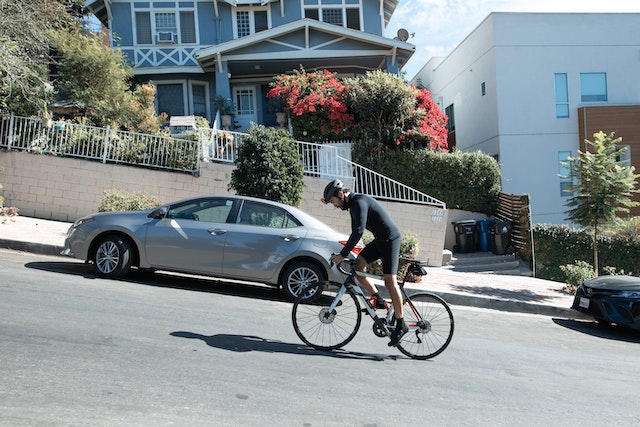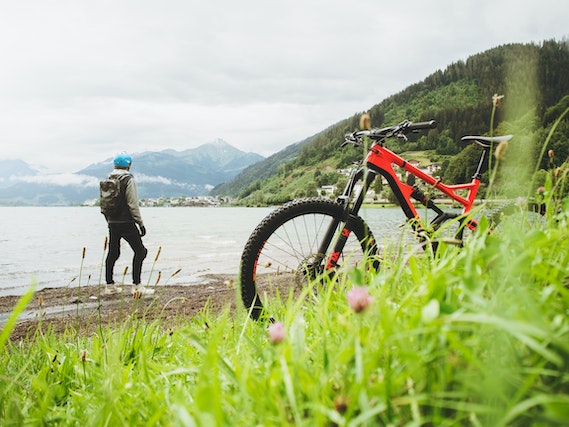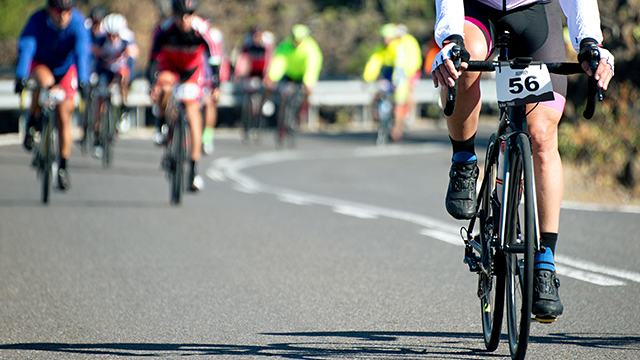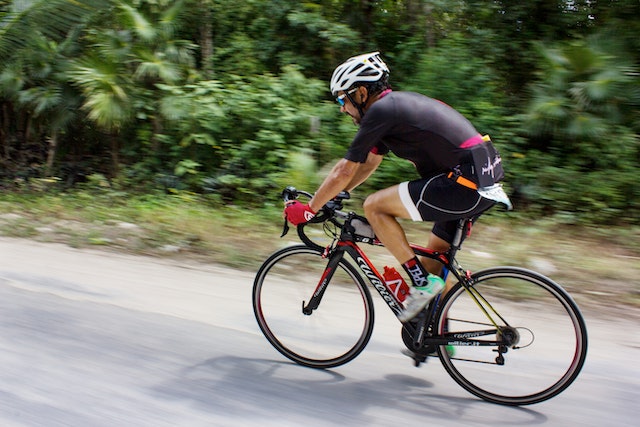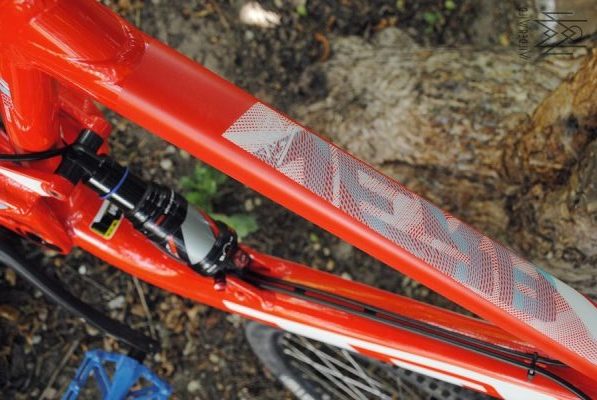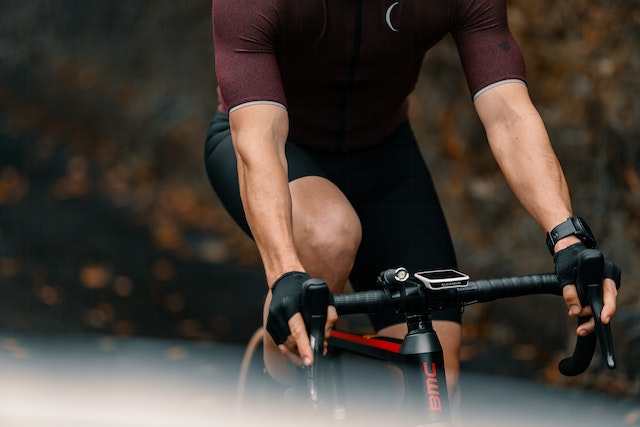It’s time to transform those icy streets into your personal winter wonderland, where you can pedal with confidence and grace. When the cold winds howl and the snow blankets the ground, you’ll need to arm yourself with the right knowledge and gear to ensure a smooth and secure ride. From dressing appropriately for the freezing temperatures to choosing the right equipment for winter riding, we’ve got you covered. And let’s not forget about preparing your trusty steed for the treacherous winter conditions!
We’ll also give you the lowdown on navigating those snowy and icy roads like a pro, as well as handy safety tips for riding in low visibility conditions. So, grab your helmet, tighten those gloves, and join our winter cycling tribe. Together, we’ll conquer the frosty roads and experience the joy of riding in the most challenging season.
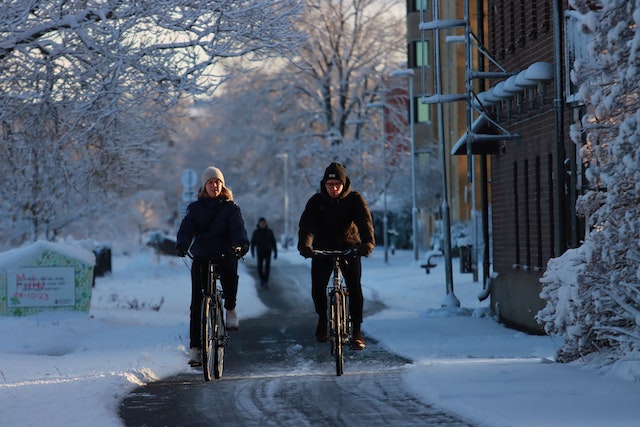
Let’s ride safely and belong to a community of fearless winter cyclists!
1. Dressing for Cold Weather Cycling
Get ready to cozy up and stay warm on your winter bike rides by dressing in the right gear! When it comes to riding safely in the winter, dressing appropriately is key.
The cold weather can be harsh, but with the right clothing, you can still enjoy your bike rides without feeling uncomfortable or freezing.
Start by layering your clothing. This allows you to adjust your body temperature as needed. Wear a moisture-wicking base layer to keep sweat away from your skin, followed by a thermal mid-layer to provide insulation. On top, opt for a windproof and waterproof jacket to protect you from the elements.
Don’t forget about your extremities! Wear thermal gloves, thick socks, and a warm hat or balaclava to keep your hands, feet, and head warm.
Invest in good quality cycling tights or pants that are designed for cold weather. These will provide extra insulation and protect your legs from the biting cold. For added warmth, consider wearing leg warmers or thermal knee warmers.
Lastly, make sure your footwear is appropriate for the weather. Consider using insulated and waterproof cycling shoes or shoe covers to keep your feet dry and warm.
By dressing in the right gear, you can stay cozy and comfortable on your winter bike rides, while ensuring your safety. So, grab your winter cycling gear and join the community of cyclists who embrace the cold weather with open arms!
2. Choosing the Right Equipment for Winter Riding
To ensure a smooth and secure journey during the colder months, it’s crucial to equip yourself with the right gear for winter cycling.
When it comes to choosing the right equipment, there are a few key items that will make all the difference in keeping you warm and safe on your bike.
First and foremost, invest in a good pair of thermal cycling gloves. These will not only keep your hands warm but also provide you with the necessary grip and control on the handlebars.
Additionally, consider getting a waterproof and windproof cycling jacket. This will protect you from the elements and keep you dry throughout your ride.
Another essential piece of equipment is a pair of thermal cycling tights or pants. These will provide insulation and help regulate your body temperature, keeping your legs warm and comfortable.
Don’t forget about your feet! Invest in a pair of thermal cycling socks and consider getting shoe covers to keep your feet warm and dry.
Lastly, don’t underestimate the importance of a good-quality helmet with a built-in visor or goggles. This will not only protect your head in case of a fall but also shield your eyes from the cold wind and any flying debris.
By choosing the right equipment for winter riding, you’ll be able to ride comfortably and safely and enjoy the beauty of winter while staying warm and protected.
So, gear up and hit the road with confidence!
3. Preparing Your Bike for Winter Conditions
Bundle up your bike like a protective cocoon, shielding it from the harsh winter conditions and ensuring its durability throughout the season. Just like you layer up with warm clothes, your bike needs some extra care too.
Start by giving it a thorough cleaning to remove any dirt or grime that could cause damage. Pay extra attention to the chain and gears, as they’re more susceptible to rust and corrosion in wet and snowy conditions.
Next, check your tires and make sure they have good traction. Consider switching to winter-specific tires that have deeper treads for better grip on icy roads. It’s also a good idea to inflate your tires to the right pressure, as cold temperatures can cause them to lose air more quickly.
Don’t forget to lubricate the moving parts of your bike, such as the chain, derailleur, and brake cables. Use a lubricant that’s specifically designed for winter riding, as it’ll provide better protection against moisture and cold temperatures.
Lastly, protect your bike from the elements by adding fenders and mudguards. These will help prevent water, snow, and mud from splashing onto your bike and causing damage. You can also consider adding a frame protector or wrapping your bike in a protective cover to shield it from salt and other corrosive substances on the roads.
By taking these steps to prepare your bike for winter conditions, you can ensure a safer and more enjoyable ride throughout the season. So, get out there and ride confidently, knowing that your bike’s ready for whatever winter throws at it.
4. Navigating Snowy and Icy Roads
Navigating snowy and icy roads can be challenging, but with the right technique and caution, you can conquer them with confidence. When riding in winter conditions, it’s important to adjust your riding style to ensure your safety. Here are some tips to help you navigate these treacherous roads:
| Tip | Description |
|---|---|
| 1. | Slow down and maintain a steady pace. Avoid sudden movements or braking, as it can cause your bike to slide. |
| 2. | Give yourself plenty of space. Leave extra distance between you and the vehicle in front of you to allow for increased stopping time. |
| 3. | Be aware of black ice. This invisible hazard can make the road extremely slippery. Look out for shiny, smooth surfaces and ride cautiously. |
| 4. | Use wider tires with lower pressure. This will provide better traction on snowy or icy surfaces. |
| 5. | Consider using studded tires for added grip. They can significantly improve your traction on icy roads. |
Remember, safety should be your top priority when riding in winter conditions. It’s essential to be prepared, stay alert, and adjust your riding style accordingly. By following these tips and using proper caution, you can confidently navigate snowy and icy roads, enjoying your ride while staying safe. Stay warm, stay safe, and happy riding!
5. Safety Tips for Riding in Low Visibility Conditions
When riding in conditions with low visibility, it’s crucial for you to prioritize your safety by ensuring you can be seen and making smart choices on the road.
Here are four tips to help you ride safely in low visibility conditions:
- Wear reflective gear: Make sure you’re wearing bright and reflective clothing, especially during the winter when it gets dark earlier. This will help other drivers see you from a distance and reduce the risk of accidents.
- Use lights: Always have your bike lights on when riding in low visibility conditions. Use a white light in the front and a red light in the back to increase your visibility to other road users.
- Slow down and stay alert: Reduce your speed and give yourself more time to react to any potential hazards on the road. Stay focused and avoid distractions to ensure you can respond quickly if needed.
- Choose well-lit routes: If possible, plan your route on well-lit roads or bike paths. This will make it easier for other road users to see you and reduce the chances of accidents.
By following these safety tips, you can ride confidently in low visibility conditions and enjoy your winter rides while staying safe. Remember, it’s important to be seen and make smart choices to protect yourself and others on the road.
Frequently Asked Questions
What type of clothing should I wear underneath my cycling gear for winter riding?
To stay cozy on your winter rides, layer up like a pro! Don’t be left out in the cold, dress in warm base layers, thermal tights, and a windproof jacket. Stay snug and stylish!
How often should I check my bike tires for proper inflation during the winter?
You should check your bike tires for proper inflation at least once a week during the winter. This will ensure that your tires have enough air and provide you with a safe and smooth ride.
Can I use regular bike lights or do I need special lights for riding in low visibility conditions?
To ride safely in low visibility conditions, you’ll need special bike lights. Regular lights won’t cut it. Remember, “Better safe than sorry!” Don’t worry, we’ve got you covered with the best lights for your winter rides.
Are there any specific hand signals or gestures I should use when riding in snowy or icy conditions?
When riding in snowy or icy conditions, it’s important to use clear hand signals and gestures to communicate with others on the road. Make sure your signals are visible and understood to ensure your safety.
Are there any specific types of bike tires that are recommended for winter riding?
For winter riding, it’s recommended to use studded or knobby tires on your bike. These tires provide better grip and traction on snowy or icy surfaces, helping you stay safe and in control.
Conclusion
So remember, when it comes to riding safely in the winter, preparation is key. Dress warmly, choose the right equipment, and make sure your bike is ready for the conditions. And don’t forget to stay vigilant on snowy and icy roads, taking extra care to navigate them safely.
Finally, be aware of low visibility conditions and take the necessary precautions. By following these tips, you’ll be able to enjoy the winter rides without any worries. Stay safe and keep pedaling!
